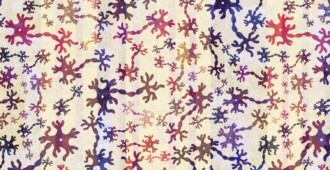Translational Research is the term used to describe studies that are the bridge between fundamental laboratory-based research and the testing of potential therapies (often by pharmaceutical companies) in the clinic. Without the continued journey of research concepts and ideas from all research and development stages from ‘bench to bedside’ it is almost impossible to develop effective therapies.
Compared to other types of early-stage research, the risks of failure and potential financial losses associated with translational research are high. In the pharmaceutical world, this stage is often referred to as the “valley of death” as many potential therapies tend to fail to make it from the lab to the clinic.
In the search for effective treatments for Motor Neurone Disease, translational research is fundamental to the progression of potentially effective treatments into the clinic.
Together, the MND Association and medical research charity LifeArc established a £1 million joint translational research fund to support researchers developing treatments for Motor Neurone Disease (MND). LifeArc staff were moved by Rob Burrows’ story and Kevin Sinfields’ ‘7 in 7’ marathon challenge, and rapidly agreed to commit an investment of £0.5 million to match the MND Associations £0.5 million for MND translational research. This lead to the formation of the ‘LifeArc & MND Association Translational Research Fund’.

Since the inception of the fund, the My Name’5 Doddie Foundation has also come onboard and added £0.5 million, making the total £1.5 million as each organisation has now committed £0.5 million to the fund.
Researchers from across the UK and the Republic of Ireland have been able to seek grants of up to £0.5 million for translational research projects focused on developing new therapies or repurposing existing treatments for MND. Although the research must be UK or Ireland-led, applications from teams working with international partners have been considered.
“Our understanding of the causes of this devastating degenerative condition has improved dramatically over the last two decades, but clinicians are still unable to offer their patients any truly effective treatments. These advances have driven MND to the forefront of neurological disease research and we want to capitalise on that momentum. The research we are seeking to fund will build on that enhanced basic scientific understanding to develop potential therapies. That is how we can begin to offer real hope to people with the condition and their families.”
Dr Brian Dickie, Director of Research Development at the MND Association
The fund will support researchers that are working on:
- developing candidate therapeutic entities (e.g. small molecule drugs, antibody drugs or gene therapies)
- pre-clinical testing of novel therapeutics in vitro or in vivo
- pre-clinical validation for existing therapeutics that could be repurposed for MND early-phase clinical trials (phase I/II) of novel therapeutic compounds
- early-phase clinical trials of existing therapeutics repurposed for MND
One project that has already been awarded a grant as a result of our partnership with LifeArc is an innovative gene therapy programme, based at the University of Sheffield in collaboration with the Cell and Gene Therapy Catapult. The programme will be testing a gene therapy designed to treat MND and Frontotemporal Dementia (FTD) caused by the C9orf72 gene mutation. Mutations in the C9orf72 gene cause a small section of the DNA to be repeated too many times. The repeated sections in the DNA are also included in the RNA, a photocopy of the DNA that is used to make the protein. The repeats cause toxic protein compounds called dipeptide repeats (DPR’s) to be produced in motor neurons, which are thought to contribute to motor neuron death in MND.
Previous research at the Sheffield Institute of Translational Neuroscience (SITraN) has identified a protein, called SRSF1 which binds to the RNA containing the repeated sequence. The SRSF1 protein facilitates the movement of the RNA out of the nucleus of the cell, which is needed for the DPR’s to be produced. The research team at SITraN have also shown that reducing levels of the SRSF1 protein decreases the movement of RNA out of the nucleus, resulting in less of the toxic DPR’s being produced in the motor neurons. Preventing RNA containing the repeated sequence from leaving the nucleus, by reducing the levels of the SRSF1 protein, is a new area of investigation and may lead to the development of a novel gene therapy for MND and FTD caused by the C9orf72 mutation.
The new joint translational research fund will allow us to help fund more projects like the one at SITraN which could facilitate the development of effective treatments for MND.
“The fund will plug the gap between fundamental research into MND disease mechanisms and possible treatment options reflecting advances in our understanding of those mechanisms. This is about stimulating the search for effective treatments: now that scientists understand the mechanisms of the disease, they can build on that knowledge to identify and eventually test potential practical treatment approaches.”
Dr Catriona Crombie, Head of LifeArc’s Philanthropic Fund
It is hoped that the fund will support the acceleration of a handful of translational research projects, from across the UK and Republic of Ireland, that are focused on developing new treatments or repurposing existing therapeutics for MND. The aim of the fund is to help generate promising results that can aid in securing further funding or lead to partnerships with pharmaceutical companies to continue the development of the potential treatment and progress towards clinical trials for those with MND.
Applications for grants from the translational research fund are now closed and those that have been submitted are due to be reviewed soon, with decisions being announced by the end of the year. We will provide an update on the projects that are awarded funding from this once we are able to.
Resources:
- MND Association Website
- LifeArc Website
- University of Sheffield Website






